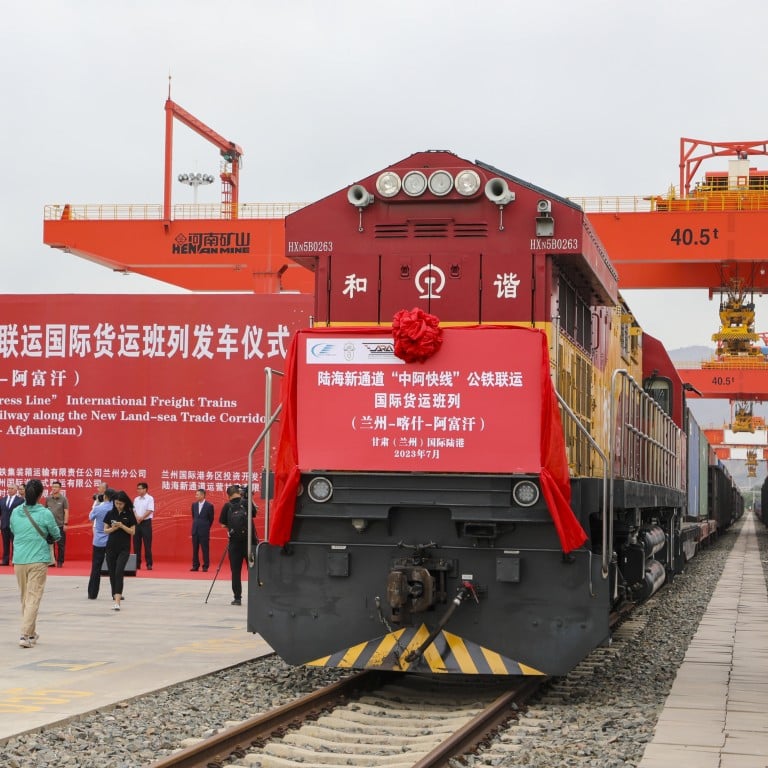
China announces land link with Taliban-controlled Afghanistan
- State media heralded the departure of a cargo from Lanzhou, a key transport hub, but analysts said its main importance is the symbolism
- Freight will pass through Uzbekistan and Kyrgyzstan, two countries where China is hoping to build a rail link
The 3,125km (1,940 miles) route uses both railways and roads and passes through Kyrgyzstan and Uzbekistan as well.
One of the main businesses involved in the route said it hopes to normalise express links between the two countries, although analysts have said the main significance is symbolic rather than practical because air and sea links are still more important.
The route starts with a railway line between Lanzhou, a major road transport hub in the northwestern province of Gansu, to Kashgar in Xinjiang on the border with Kyrgzstan.
The route then continues by road to Kyrgyzstan, travelling to the border with Uzbekistan, where it switches back to rail until it reaches the Afghan border town of Hairatan.
The first train to leave Lanzhou was carrying US$1.5 million of freight, including car parts, furniture, machinery and equipment from Gansu province and other places, according to state news agency Xinhua.
“We hope to normalise the route for Sino-Afghanistan express service and aim to run four times a month,” Li Wei, a marketing manager from New Land-Sea Corridor Operation Co, one of the main firms involved in the shipment, told Xinhua.
But one observer said the route’s main importance is symbolic as China seeks to increase communications with the Taliban regime in Afghanistan.
“Currently, the economic value of this land route from China to Afghanistan is still not high. Though it has some strategic importance, this kind of transport is not yet on a [large] scale,” Zhu Yongbiao, a professor at Lanzhou University’s school of politics and international relations said.
The Taliban takeover of Afghanistan has resulted in a cut in a number of routes into the country and most freight and traffic goes via Pakistan, according to Zhu.
However, most of these routes suffered from limited capacity, according to Zhu. “The line with the highest volume between the two countries is still the sea route to Pakistan, other routes such as land route and air corridor all have relatively small capacity.”
According to the shippers, the newly opened China-Afghanistan land route is an extension of the China-Kyrgyzstan-Uzbekistan freight land road, which started delivering shipments from China to Uzbekistan last December.
The three countries hope to build a rail link but despite signing a memorandum of understanding back in 1997, they have never been able to make much progress.
“All three sides will contribute equal investments toward the Kyrgyz section of the railway,” Niva Yau, a fellow in the Eurasia Program at the Foreign Policy Research Institute, said in a report published in March.
“However, many practical issues are not yet resolved, particularly those of public concern in Kyrgyzstan.”
She said local concerns included “the number of Chinese workers expected to arrive and stay, vocational training for local railway engineers, investment for industrial projects along the railway, and an increasing number of permits for Kyrgyz products to enter China”.
But the negotiations intensified recently, with a preliminary route of the Kyrgyz section having just been approved in June 2022.
Three countries have also jointly signed a construction cooperation agreement for the railroad’s Kyrgyzstan section, and a feasibility study is due to be complete in June 2023.


